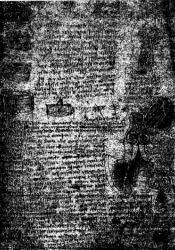Leonardo da Vinci's Heart Studies
Leonardo da Vinci began his studies of the heart, specifically looking at the flow of blood through the aorta and closure of the aortic valve. Da Vinci first noted in his studies that it was the heart that was the center of circulation, not the liver which was the belief at the time produced by anatomist Galen, whom da Vinci studied from. With this information, da Vinci continued to look deeper in the mechanics of the heart and wrote detailed descriptions of the blood flow. Da Vinci used his work with fluid dynamics and fluid drag in 1510 to help him describe the closure of the aortic valve in the heart. In his notes, he wrote about how the blood pushed through the valve circles back around in dilated trunk of the aorta, currently known at the sinuses of Valsalva, to close the valves. An interesting point to make is that sinuses of Valsalva are named after Antonio Valsalva, who “discovered” them in the 1700s.
Originally, people believed the valve closed by blood back flowing into the aorta once the heart relaxes, pushing the valve closed. But Leonardo argued by saying “This would be impossible, because if the blood beats against the valves of the heart while they are wrinkled and folded, the blood that presses from above would press down and crumple the membrane.” He then devised an ingenious way to prove them wrong. Da Vinci used sculpting skills to create a glass heart model. Using water and grass seed in the model, he could visualize the flow around that valve. Unfortunately, like most of da Vinci’s work, his heart studies were not published at the time. His theory of the blood flow forming spiraling eddies to close the valves was not rediscovered or confirmed until 450 years later around 1960 by Brian Bellhouse at Oxford University.
Sources and Picture from:
Isaacson, W. (2017). Leonardo da Vinci. New York: Simon and Schuster

